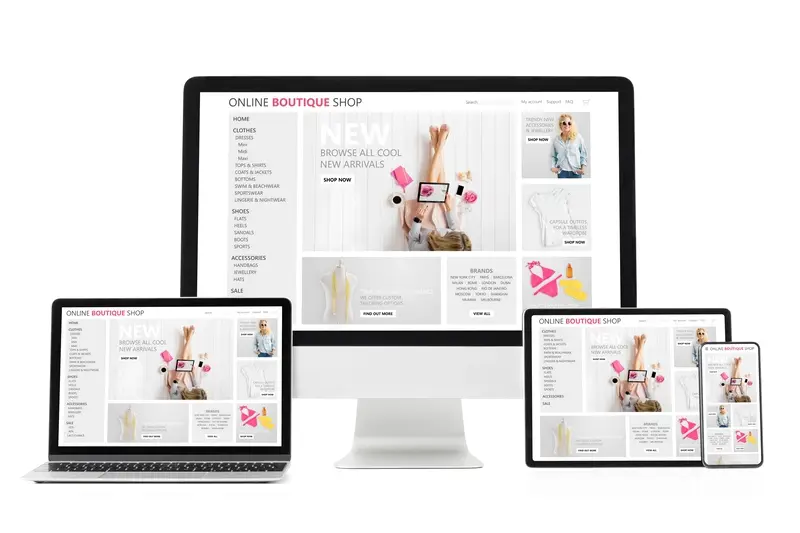Can I Start With Cross-Platform and Switch to Native Later?
More than 70% of mobile app projects I've worked on over the past eight years have involved clients asking this exact question. They want to know if they can start with cross-platform development and then move to native apps later. The short answer? Yes, absolutely—but there's a lot more to consider than you might think.
This approach has become increasingly popular as businesses look for ways to get their mobile app to market quickly whilst keeping costs down. Cross-platform development lets you build one app that works on both iOS and Android, which sounds like a dream come true. But what happens when you need the extra performance, features, or user experience that only native development can provide?
The question isn't whether you can make the switch—it's whether you should, and more importantly, when you should make that move.
Throughout this guide, we'll explore the technical realities of starting with cross-platform development and transitioning to native apps. We'll cover what this technology transition actually involves, the challenges you'll face, and how to plan your development evolution properly. By the end, you'll understand exactly what this journey looks like and whether it's the right path for your mobile app project.
Understanding Cross-Platform Development
Cross-platform development is exactly what it sounds like—building one app that works across multiple platforms. Instead of creating separate apps for iPhone and Android, you write your code once and it runs on both systems. Think of it like writing a letter that can be read by people who speak different languages.
The main frameworks doing this job right now are React Native, Flutter, and Xamarin. Each has its own strengths and quirks, but they all promise the same thing: write once, deploy everywhere. React Native uses JavaScript and lets you build apps that feel quite native. Flutter, Google's offering, uses Dart and gives you lots of control over how things look. Xamarin works with C# and integrates well with Microsoft's ecosystem.
The Real Benefits
From a business perspective, cross-platform makes perfect sense. You're cutting development time roughly in half—maybe more if you have a simple app. Your budget goes further, and you can get to market faster. That's music to any startup's ears.
But here's what I tell my clients: it's not magic. You're still building for different platforms with different behaviours, different screen sizes, and different user expectations. The framework handles the heavy lifting, but you still need to think about these differences.
Common Cross-Platform Frameworks
- React Native - Uses JavaScript, backed by Facebook
- Flutter - Uses Dart language, created by Google
- Xamarin - Uses C#, owned by Microsoft
- Ionic - Web-based approach using HTML, CSS, and JavaScript
The performance question always comes up. Cross-platform apps generally perform well for most use cases, but they might struggle with graphics-heavy games or apps that need deep system integration. For standard business apps, social platforms, or e-commerce? They're absolutely fine.
What Native Development Really Means
Native development is when you build a mobile app using the official programming languages and tools that each platform provides. For iOS apps, that means using Swift or Objective-C with Apple's Xcode development environment. For Android apps, you'll be working with Java or Kotlin using Android Studio. Think of it like speaking the native language of each platform—your app can communicate directly with the device without needing a translator.
The biggest advantage here is performance. Native apps run faster because they're built specifically for that operating system; they can access all the device's features without any barriers. Want to use the camera, GPS, or push notifications? Native development gives you full access to these features straight away.
Key Benefits of Native Development
- Maximum performance and speed
- Access to all device features and APIs
- Better user experience with platform-specific design
- Easier to implement complex functionality
- Superior app store approval rates
The downside? You'll need separate development teams for iOS and Android, which means more time and money. Each platform requires different skills and expertise, so your development evolution becomes more complex when you make the technology transition from cross-platform to native.
Before committing to native development, consider whether your mobile app truly needs all the performance benefits—sometimes the extra cost isn't justified for simpler applications.
The Technical Reality of Making the Switch
Let me be straight with you—switching from cross-platform to native isn't like updating an app. It's more like building a completely new one from scratch. I've watched countless teams underestimate this transition, and it can catch even experienced developers off guard.
The biggest shock comes when you realise how much of your existing code simply won't transfer over. Cross-platform frameworks like React Native or Flutter create their own layer between your code and the device's operating system. When you move to native development, you're throwing away that safety net and starting fresh with Swift for iOS or Kotlin for Android.
What Actually Transfers Over
The good news? Your logic, workflows, and understanding of how your app should behave all carry forward. Your design concepts will mostly work too, though you'll need to adapt them to each platform's specific guidelines.
- Business logic and app flow concepts
- Design principles and user interface ideas
- Database structures and API connections
- Testing strategies and quality assurance processes
- Project management experience and team knowledge
The Hard Reset
Everything else needs rebuilding. Your user interface code, platform integrations, and performance optimisations all start from zero. This means doubling your development time since you're now building for two separate platforms instead of one shared codebase.
Planning Your Technology Transition Strategy
Right, let's talk about the elephant in the room—making the switch from cross-platform to native isn't something you do on a whim. I've seen too many businesses jump ship without a proper plan, and frankly, it rarely ends well. Your technology transition needs to be strategic, not reactive.
Start by mapping out your current mobile app's core features and identifying which ones are causing the most headaches in your cross-platform setup. Performance bottlenecks, platform-specific limitations, user experience issues—these are your red flags. Once you've got that list, prioritise them based on business impact rather than technical complexity.
Timing Your Development Evolution
The timing of your transition matters more than you might think. You don't want to be rebuilding your app during your busiest season or when you're launching new features. Plan for a gradual migration where possible—maybe start with one platform first, then tackle the other once you've worked out the kinks.
The best time to plan your technology transition is before you actually need it, not when your current solution is already failing your users
Budget accordingly too; native development will cost more upfront, but the long-term benefits often justify the investment. Set realistic timelines and remember that good development evolution takes time to get right.
Common Challenges When Moving from Cross-Platform to Native
Right, let's talk about the real challenges you'll face when making this transition—because there are quite a few! I've guided countless clients through this process and whilst it's definitely doable, it's not without its hurdles.
Team and Knowledge Gaps
Your biggest challenge will likely be your development team. Cross-platform developers don't automatically know native development; they're completely different skill sets. You'll need to either train your existing team (which takes months) or hire new developers who specialise in iOS Swift or Android Kotlin. Finding good native developers isn't cheap either—they command higher salaries than cross-platform developers.
This is where understanding the current skills gap in mobile development becomes crucial for planning your transition effectively.
Time and Resource Investment
You're basically starting from scratch in many ways. Your existing codebase won't transfer over, so you'll need to rebuild core functionality. This means longer development timelines and higher costs than you might expect.
The main challenges you'll encounter include:
- Rewriting all your business logic for each platform
- Learning new development tools and workflows
- Managing two separate codebases going forward
- Coordinating feature releases across platforms
- Testing on multiple devices and OS versions
The good news? Once you've made the switch, you'll have much more control over performance and user experience. Just be prepared for a bumpy ride getting there!
Real-World Examples of Successful Development Evolution
I've watched countless apps make the technology transition from cross-platform to native over the years, and some stories really stick with you. Take Instagram, for instance—they started with a cross-platform approach but made the switch to native development as their user base exploded. The performance gains were massive, particularly for photo processing and the camera features that users rely on daily.
WhatsApp followed a similar path during their development evolution. They began with cross-platform tools but transitioned to native mobile app development to handle billions of messages without hiccups. The switch wasn't just about performance—it was about accessing platform-specific features that made the app feel truly integrated with each operating system.
Document your current architecture thoroughly before making any transition—you'll thank yourself later when mapping out the migration strategy.
Success Factors in Mobile App Evolution
Looking at successful transitions, there are clear patterns that emerge. Companies that nail their development evolution usually follow these steps:
- Start the native transition with the most performance-critical features first
- Maintain both versions during the transition period
- Test extensively with real users throughout the process
- Plan for 3-6 months longer than initially estimated
The apps that struggle during technology transition often rush the process or underestimate the complexity. Success comes from treating it as a gradual evolution rather than a sudden switch—your users will barely notice the change, but they'll definitely feel the improvements.
Conclusion
After eight years of helping companies make these exact decisions, I can tell you that starting with cross-platform and switching to native later is absolutely possible—but it's not always straightforward. The technical challenges are real, the costs can be significant, and the timeline might be longer than you expect.
What I've learned is that success depends on planning from day one. If you know there's a chance you'll want to go native later, structure your cross-platform app accordingly. Keep your business logic separate, document everything properly, and don't get too comfortable with framework-specific solutions that won't translate well.
The companies that handle this transition best are the ones that treat their cross-platform app as a stepping stone rather than a final destination. They use it to validate their idea, understand their users, and build revenue—then they invest those resources into native development when the time is right.
Remember, there's no shame in starting cross-platform. Some of the biggest apps in the world began this way. The key is being honest about your long-term goals and making informed decisions based on your specific situation, not what worked for someone else's completely different app.
Share this
Subscribe To Our Learning Centre
You May Also Like
These Related Guides

How Long Does It Take To Build An App With No-Code?

How Do You Build a Future-Proof App Technology Strategy?



